Imagine how bad you will feel, if there is a talk going over about the fielding placement of cricket in a group or while watching live cricket commentary? From today onwards you will never ever have to worry about knowing the cricket fielding positions as I am going to explain you each and every possible fielding position which a captain can make during a match.
Moreover, having a complete knowledge about the field placement in cricket can enhance your overall experience as viewer and a professional cricket player.
I am assuming that you all know about how many fielders can be place during a match, yes it is only 9 fielders a captain can set as remaining 2 are bowler and a wicket-keeper which always remains fixed. A team’s captain, has a choice to rotate these 9 players in whatever fielding position he wants to set according to the situation of the game.

All Cricket Ground Fielding Position Names With Image
1) First Slip
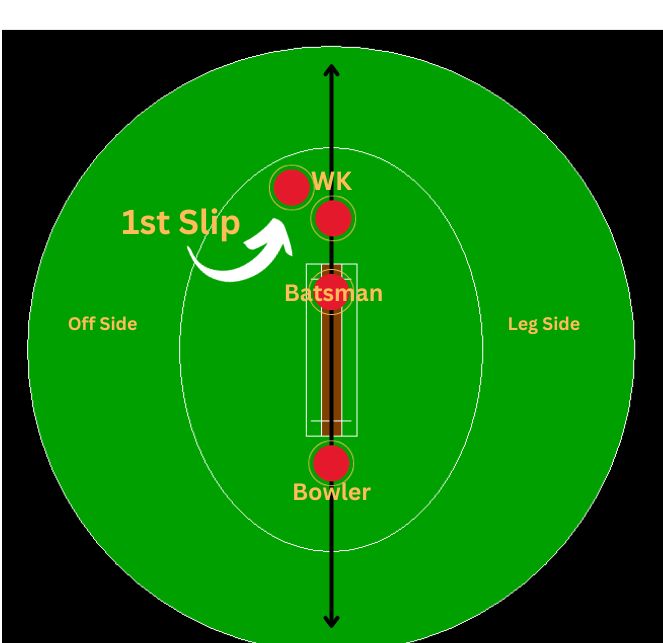
Let’s start with the first slip, you might have heard often times during a test match about this term, When a fielder is placed just right behind the wicket keeper, it is said to be first slip fielding position.
This fielder is mandatory when a bowler is bowling with new ball, the more the ball gets swing higher the chances of being getting a catch out on 1st slip.
2) Second Slip
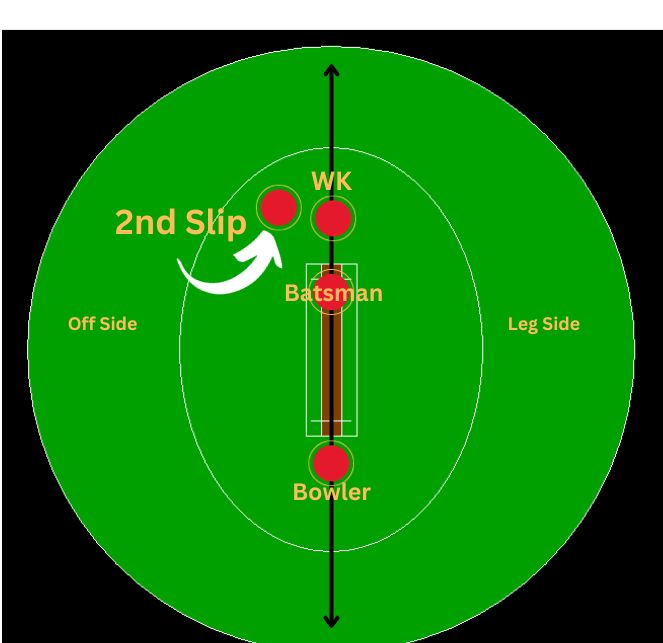
All the slip fielding position are similar to each other, the only difference is the amount of distance which has to be maintain according to the number like 1st, 2nd, 3rd and so on. Similarly, the 2nd slip fielding position is said when a player is placed a bit ahead than 1st slip on his right side.
Moreover, 2nd slip is probably the best position a player can field as the maximum amount of catches gets on this field placement, be it test, ODI or t20I format.
3) Third Slip

The term ‘third slip’ refers when bowler or captain sets a fielder just right behind the 2nd slip position, one essential thing is to be taken care of, after 1st slip all the slip fielder would stand 2 or 3 steps ahead as the number increases. for example: 2nd slip will stand a bit ahead than 1st, and 3rd slip would stand a bit ahead than 2nd one and so on.
4) Fly Slip
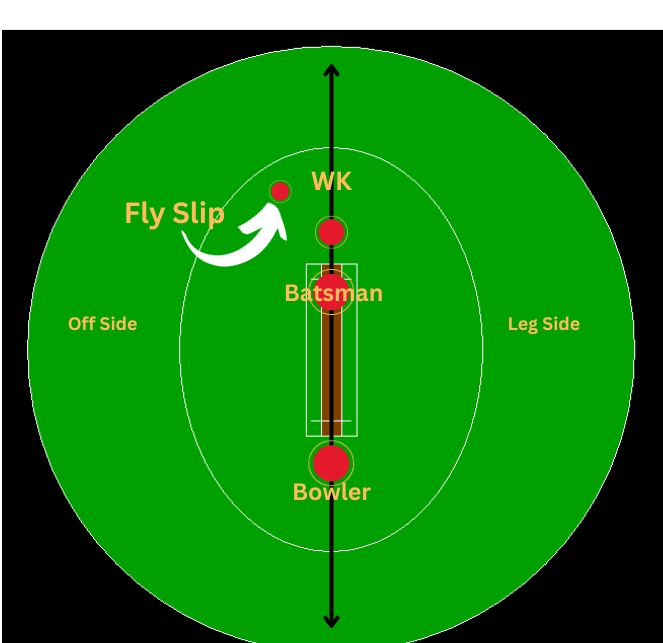
Now this one might one the less heard slip position, but it is a great position for batter who struggles short pitch or short of length deliveries outside the off stumps. When a fielder is placed between the gap of 2nd and 3rd slip, just before the 30 yards circle, it will be called as Fly slip.
5) Third Man

It is one of the most essential fielding position of cricket which a captain or bowler considers, other than few exceptional cases. A third man fielder will be placed on 45 yards just right behind the 3rd slip’s direction.
If the third man player goes deep then it will known as Deep Third Man and when it is placed on 30 yards circle it will become short third man. These three terms Short third, Deep Third, and Third man differs according to the distance. It applies to all the other cricket fielding positions as well.
6) Gully
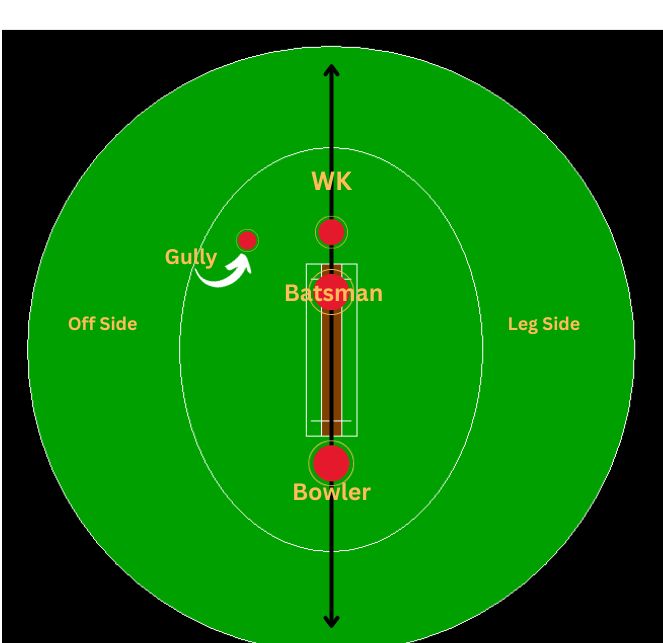
Gully is most suitable field position in test cricket in order to trap the batters while playing back foot punch and cut shots on outside the off stump balls. The Gully field placement is located at the ending of slip fielders. It will placed just behind the square to the batsman on the distance of around 20 yards.
7) Silly Point
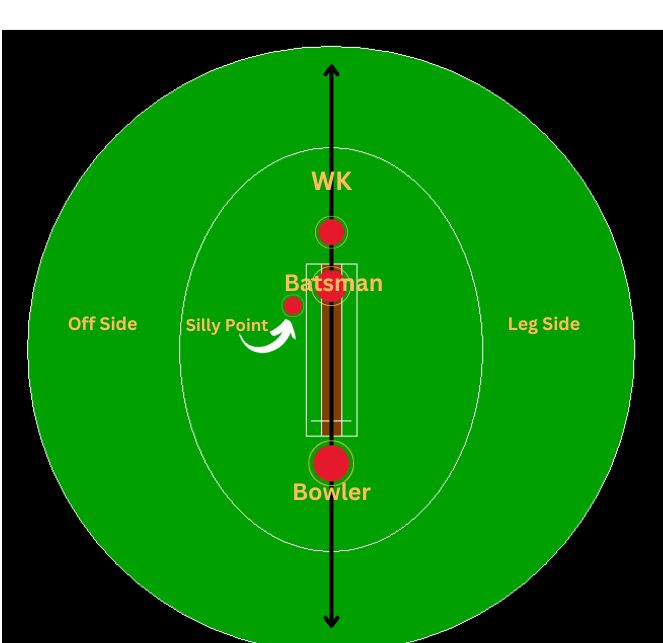
Probably one of the most dangerous fielding position of cricket is when a player is placed just 3 or 4 steps ahead of the batsman on the off side, which is popularly known as Silly Point.
Team’s most active and athletic player is best suitable for this field placement along with all the protection equipments like Helmet, Abdomen Guard, and Shin Pads.
8) Point
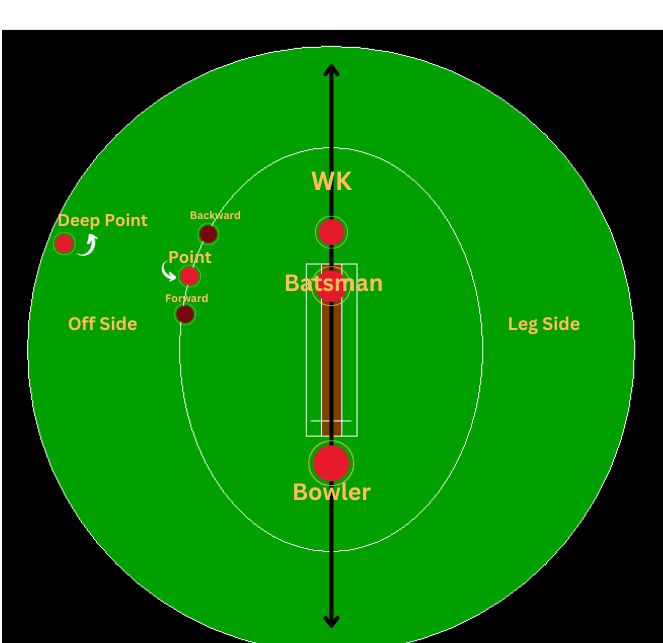
Yet another toughest fielding position to stop the ball is point. A point fielder is placed exactly square off the wicket on 30 yards. It is tricky one because one this place ball tends to be turn on the rightwards, specially after playing cut shot. Moreover, the point can be divided in 3 parts:
Forward Point: When a player is placed left side on the point’s fielder having distance of around 10 yards, then it is said to be Forward point.
Backward Point: Similarly, when a fielder is located on rightward to main point fielder, it is called as backward point fielder. It is oftentimes used in test match cricket, when ball is heaving getting outswing movement.
Deep Point: I don’t think I even need to explain this one, As I earlier told according to the distance fielder position name changes, therefore when a point fielder goes deep on the boundary line, we call it as Deep Point fielder.
9) Cover Point

If a bowler wants to get protection from off side area, then he certainly cannot forget to place a player on cover point position. Cover Point is located between the covers (check the next one) and point. It’s main aim to stop the ball which comes by playing square and cover drives along with cut and backfoot punch shots.
10) Covers
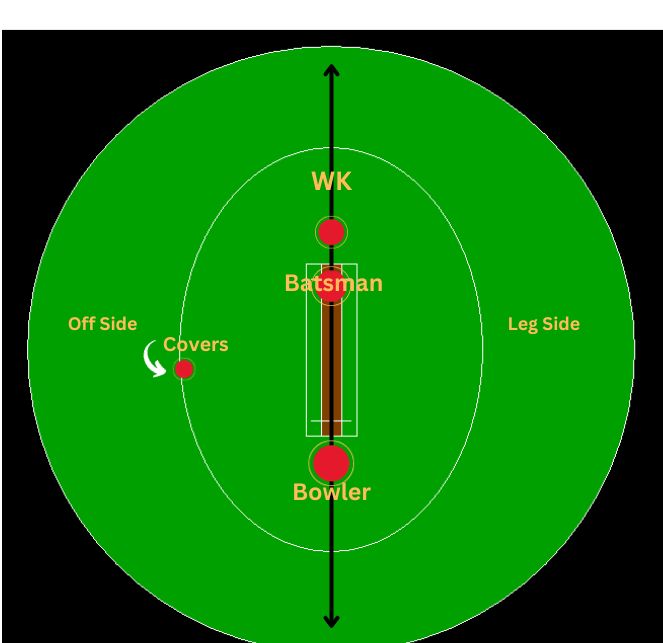
One of the most popular and favorites field position of many international cricketers is said to be the covers. As the name says, it covers the main off side area where the majority balls comes from the bat. Talking about it’s placement, it would be set on the right side of cover point by keeping at least 10-15 yards distance.
11)Extra Covers
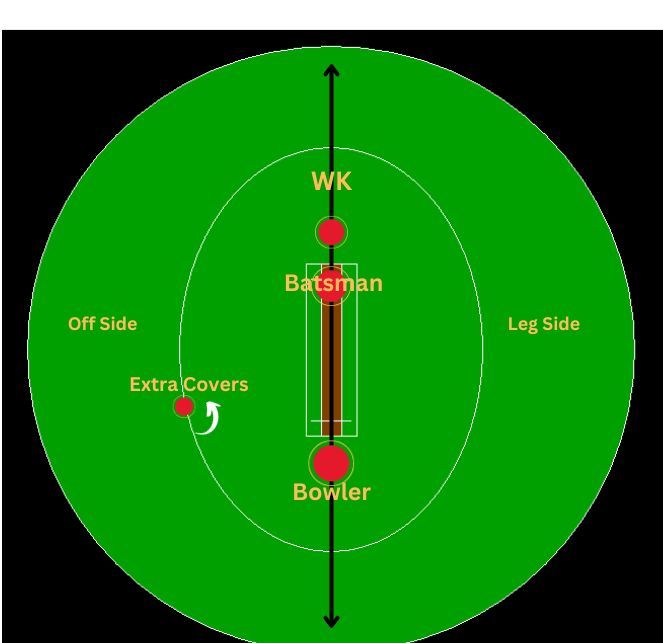
Another essential fielder of off side, Extra covers is the place where a fielder needs to stand on rightwards direction of covers with same as usual distance of around 8-10 metre.
12)Silly Mid Off
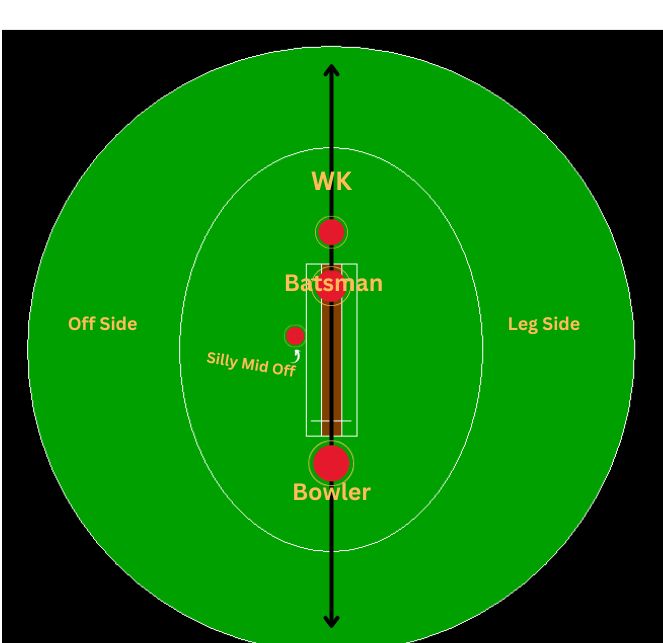
Now moving on to our offside straight direction fielder, Silly Mid off is a fielder who stands at half of the pitch, around 7-8 metres ahead from a batsman on off side. It is usually best position to grab the catches when batsmen are playing too defensive.
13)Mid Off
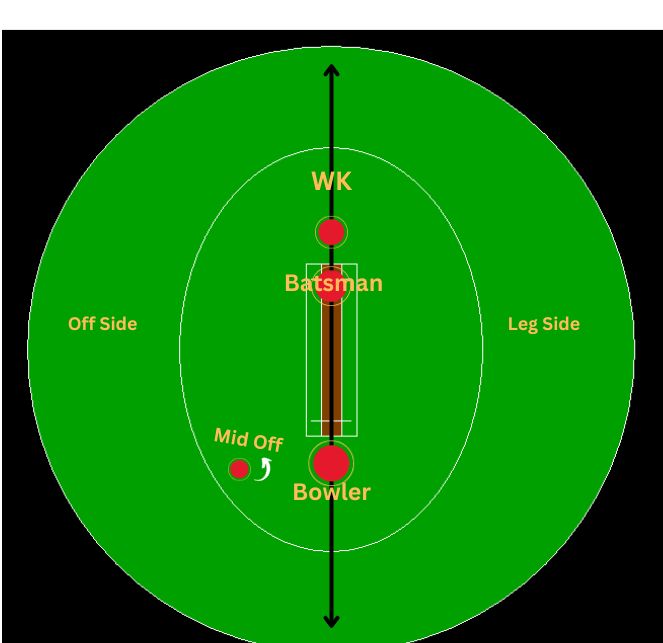
No matter whatever format you are watching, the mid off fielder will always be there on leftwards direction of bowler at 30 yards circle. It is one of the most important fielder of cricket which you cannot miss to set it up, except for some exceptional or strategic cases.
14)Long Off
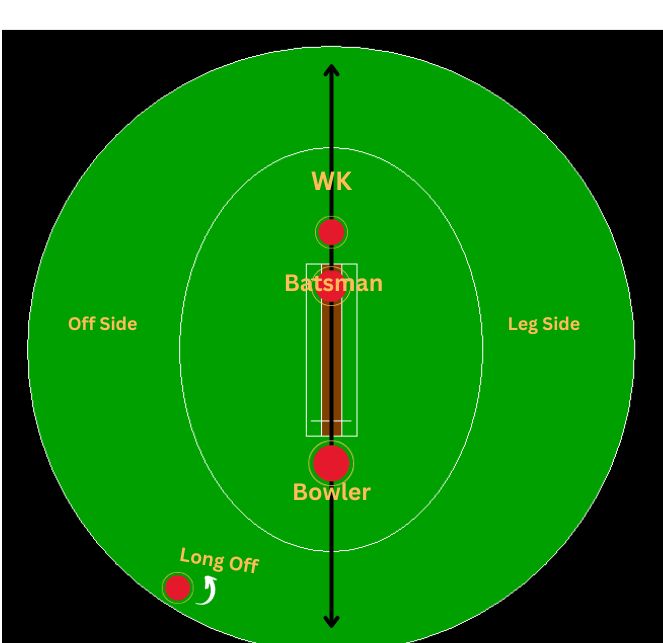
If the mid off fielder comes deep on the boundary line, it will be named as Long Off. The importance of Long Off mainly occurs in ODI and T20I cricket as batters tend to play big and attacking shots over the 30 yards line to the straight, that’s where the role of Long Off comes in to the play to stop the ball and runs.
15)Short Leg
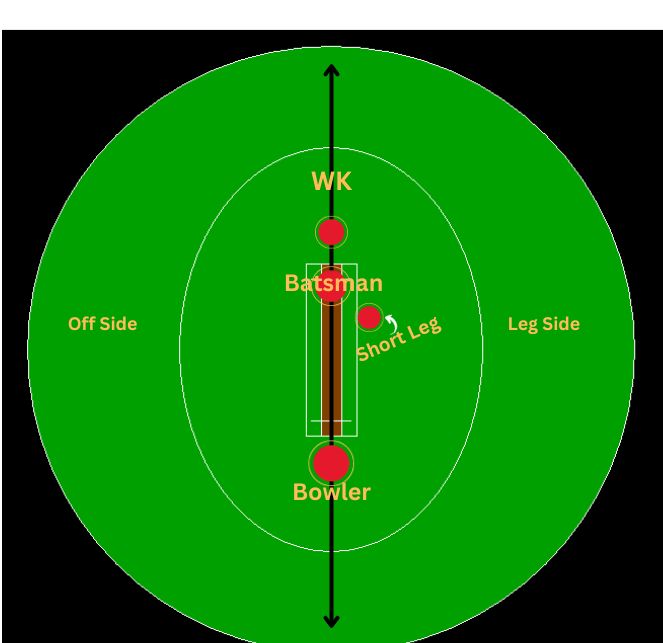
Moving ahead to our leg side fielding position of cricket, first we will start with Short Leg, which is equally or even more dangerous than Silly Point fielder. The attacking shots like Sweep and Pull can cause even a injury to whoever fields on this spot. It’s placement would be 2-3 yards further than batsman on the leg side.
16)Silly Mid On
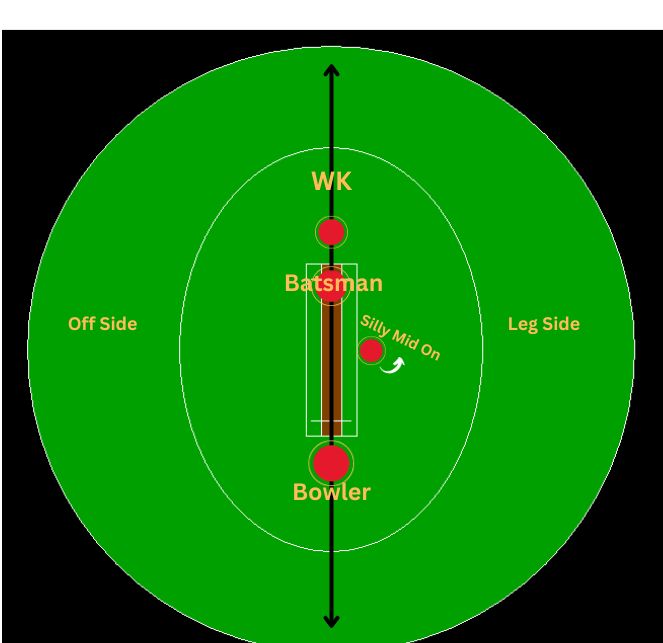
Similarly like we talked about silly mid off, The player who would be placed at between 7-8 metres ahead of a batsman on the leg side will be called as Silly Mid On fielder. This one is mostly used when a off-spinner is getting good amount of spin on the pitch where the chances to catches increase while playing flick aur defensive shots.
17)Mid On
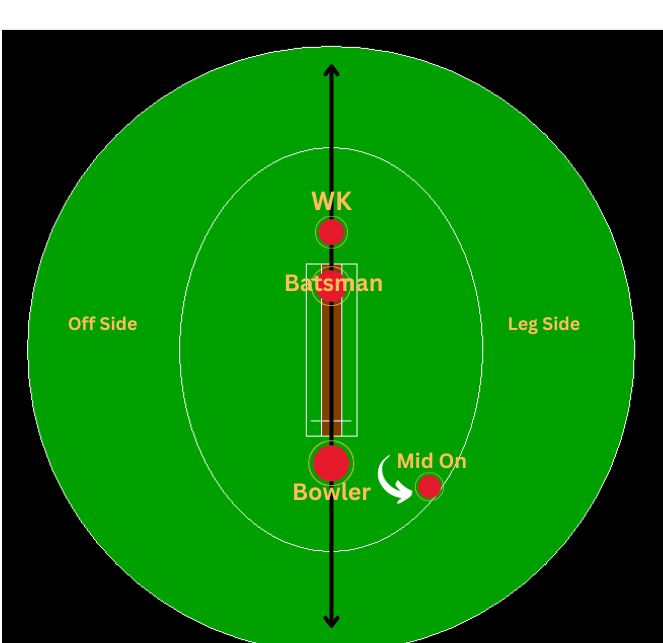
Mid off and Mid on are two pillars who stops the majority of the balls which comes towards the straight rightwards or leftwards to the stumps and umpire. Mid On would be situated on right side of the bowler at 30 yards line or slighter inside according to the bowler’s choice.
18)Long On
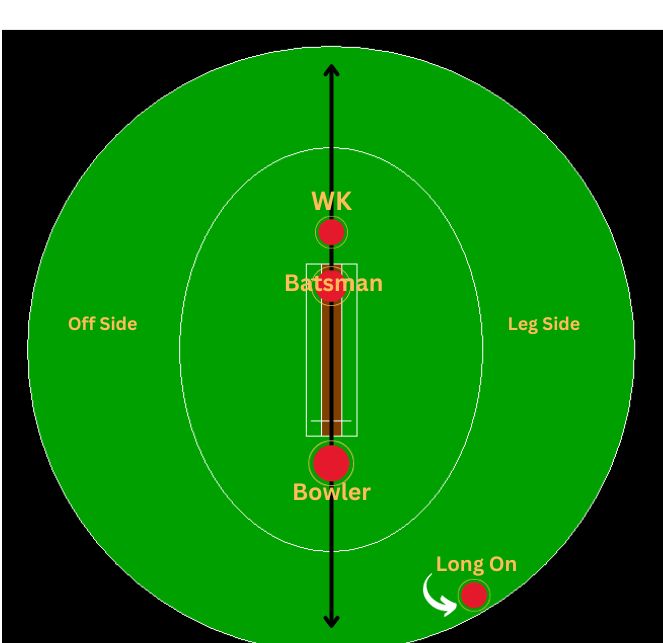
If you ever want to grab as many catches as you can, then you should definitely try to field at Long On. The moment Mid On fielder goes on the boundary line, it becomes the Long On fielding position. Interesting thing about this one is, you will always see the best of fielder of the team guarding the boundary the Long On spot.
19)Mid Wicket
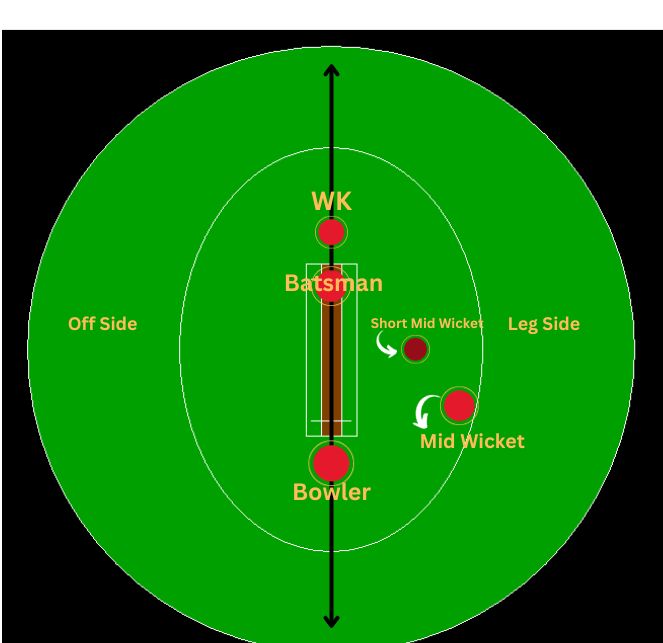
When players like Virat Kohli and Steve Smith are playing, one cannot forget to set the mid-wicket fielder as it will help to stop the runs when batters play flick and pull shots. The location would be to place a mid-wicket fielder is on the right side of Mid On fielder in the circle with having decent amount of decent around 25-30 metres.
Another variation of this one is, short mid wicket. There is no major difference between and mid wicket and short mid-wicket except that short mid-wicket would be standing much closer to the batsman.
20) Sweeper
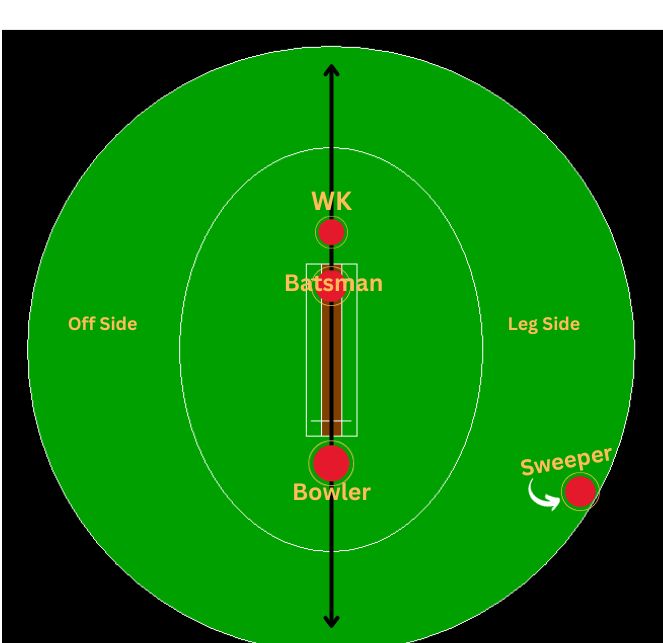
Sweeper fielder comes in to the play when a batsman is continuously playing slog sweep and lofted shots on the leg side. To tackle it, captain sets a fielder behind the mid-wicket on the boundary line, which can be called as Sweeper.
21) Square Leg

Square leg is also equally tricky and tough as Point when it comes to field. Due to the turn of the ball after playing the shot makes it difficult for a fielder to judge the direction of the ball. Square is placed just right side of the leg umpire.
When a square leg fielder goes on the boundary line on same direction, it will be called as Deep Square leg. It comes under the mandatory field placement in order to protect the on-side area.
22) Leg Slip

You might be quite familiar with normal slip fielders who are placed beside the wicket-keeper, but there is another slip position which plays vital role in test cricket to take the wickets, that is Leg Slip. A fielder who is located at right behind the batsman at the distance of 5-8 metres is called Leg Slip fielder.
23) Fine Leg
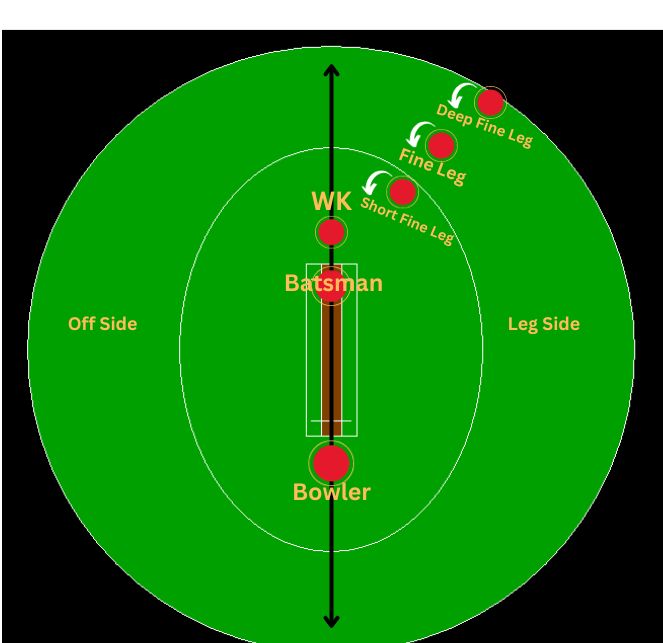
Fine leg is a go to fielder of every fast bowler, especially for those who are in-swing bowlers. If you see a fielder placing on 45 yards at rightwards direction of square leg, you can be sure that it is a Fine Leg fielder. Moreover, this can further even classify in to two variations.
Short Fine Leg: As the name says ‘Short’ means when the Fine Leg fielder comes inside the 30 yards circle, it will become the Short Fine Leg.
Deep Fine leg: Similarly, when the fine leg lad who is placed at 45 yards moves to the boundary line in the deep, it is called as Deep Fine Leg.
Conclusion
With all these 23 placements, our list of cricket fielding positions name comes to end with pretty good amount of information regarding all these fielding stuff. Apart from these, you might see some other fielding variation including the terms like Backward, Forward, Deep, Short, Silly, etc which is nothing but just a measurement of distance, while the core fielding names would remain same.
FAQ
Which is the most dangerous fielding position in cricket?
There are few field position which are considered as quite dangerous to do on cricket field. These are Silly Point, Short Leg, and Catching positions.
Which is the most easiest fielding position to do?
There is no such thing as easy when it comes to the fielding, however Fine leg is a bit easier to do then all other field placements.
What is Mid off and Mid On In cricket?
Mid Off and Mid On are the names of fielding positions on cricket field. These both are usually placed just right and leftwards direction of the bowler's run-up.
What is the Virat Kohli's favorite field position?
The favorite fielding position of Virat Kohli is Covers and Long-On, most of the times you will see him fielding on these two places in white ball cricket.
- Salary Of Indian Cricket Players In 2024 - August 27, 2024
- Virat Kohli’s ODI Runs Year by Year: A Journey Through Cricket Greatness - July 26, 2024
- Complete Guide On How To Play Ranji Trophy Cricket In India - July 11, 2024

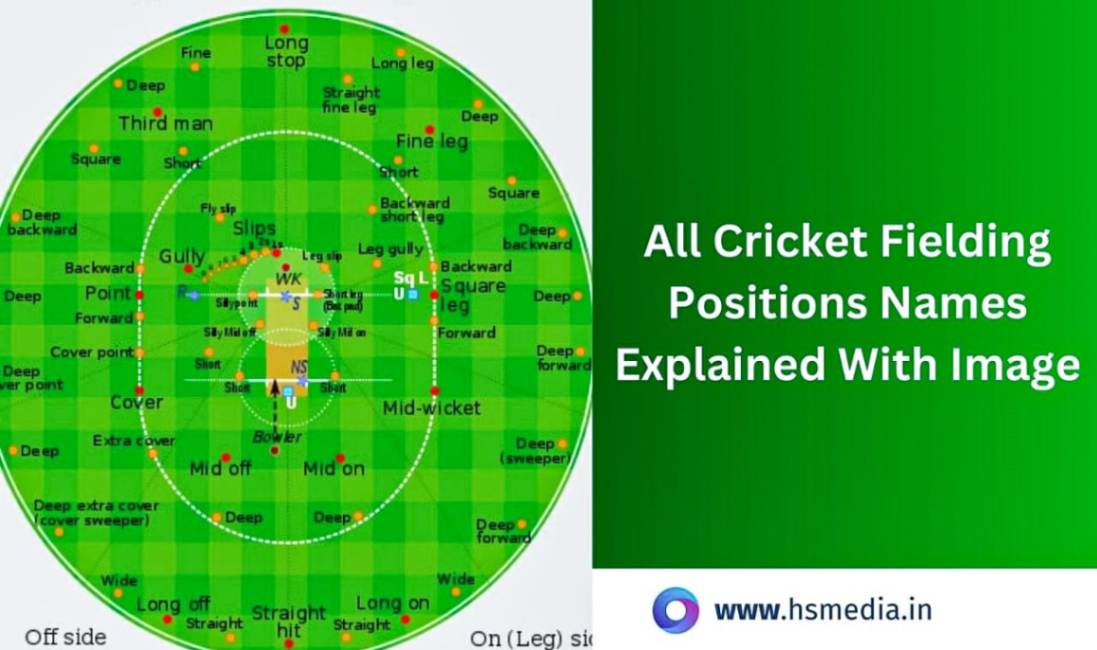
1 thought on “Know About All Fielding Positions In Cricket With Images”
Comments are closed.